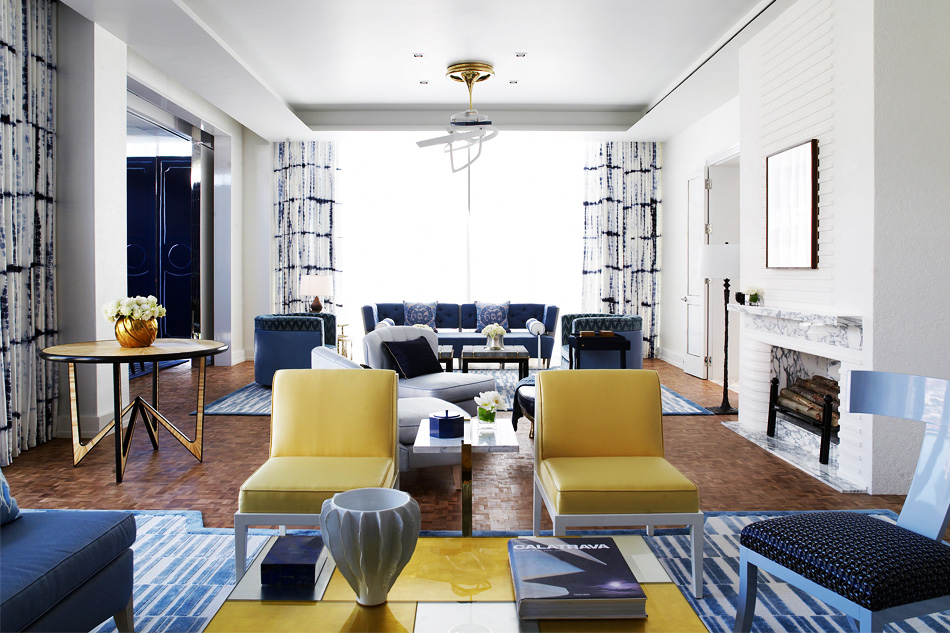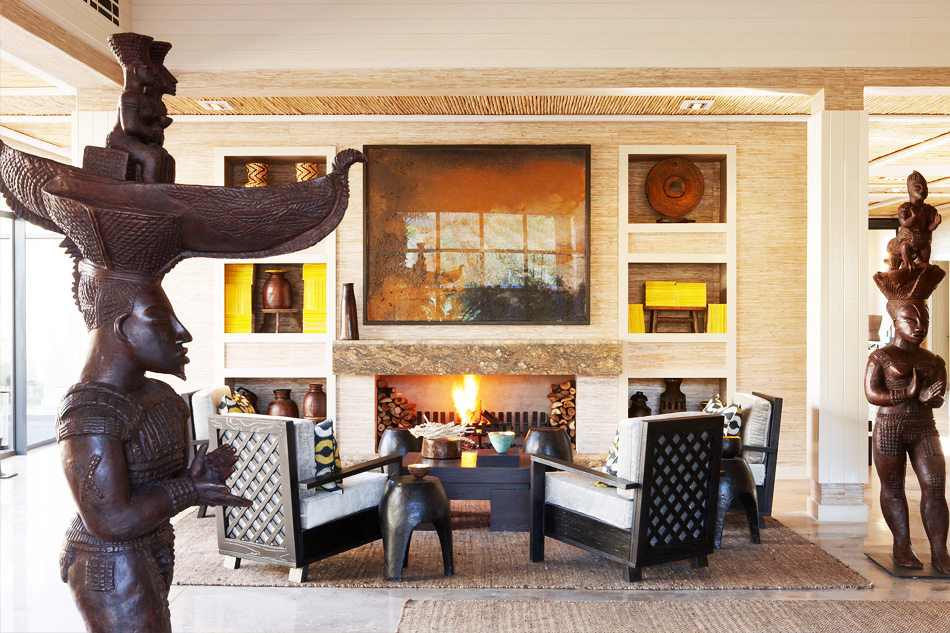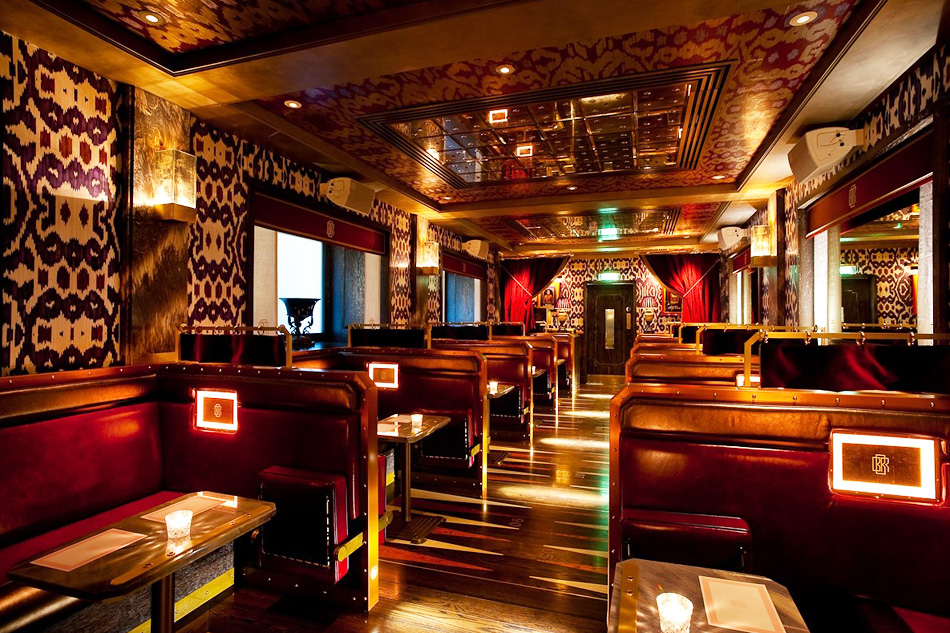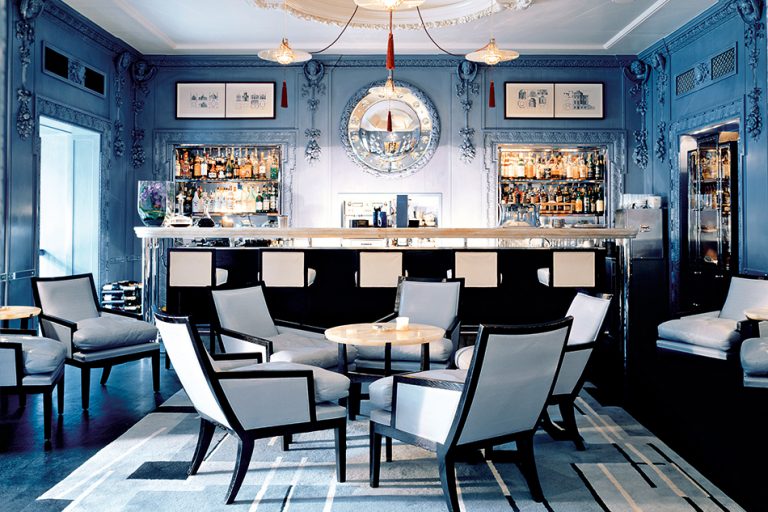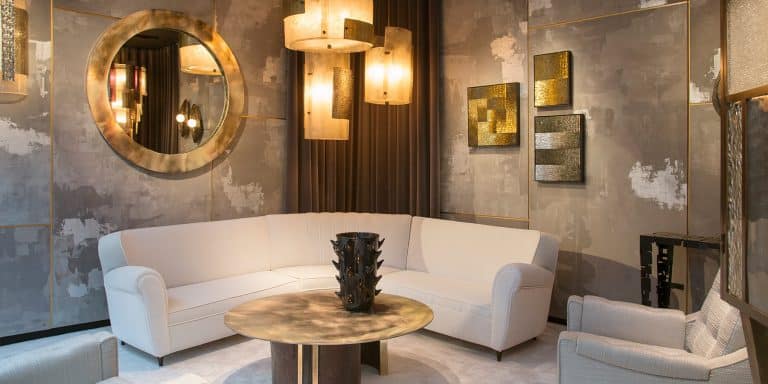
January 2012All photos courtesy of David Collins Studio
I am waiting in a large white conference room at the David Collins Studio’s West London headquarters. The chair I’m sitting on is a ubiquitous office design, made extraordinary by the fact that it is upholstered in silver leather. I’m drinking weak tea and trying to ignore a huge plate of dark-chocolate cookies beckoning me across the glossy, white expanse of the conference table. The room is so light, white, quiet and vast that my brain is starting to shut down, in much the same way it would if I were in a health spa or yoga studio. This is an extraordinarily Zen and calming space, but I have now been sitting here for 45 minutes. Beautiful young people occasionally drift in and out, always with a semi-apologetic look in their eyes, but the wait goes on.
When design legend David Collins finally walks in, he brings enough charm and energy with him to shake me from my torpor and gestating annoyance. Collins hates to be late and seems genuinely upset to have kept me hanging on so long. He also hates to be interviewed, but I now have the psychological advantage. Those three-quarters of an hour are hard currency in the interview game.
For someone who professes to have “nothing to say,” he is in fact an engaging interviewee, not least because of his soft Dublin accent and apparent modesty. “I don’t think I am particularly talented or particularly creative,” he says, “but I do think I am particularly hard-working. That would have been just as true had I been a doctor or a lawyer. I just don’t think what I do is a big deal.”
Brought up in Glenageary, an affluent seaside suburb of Dublin, he followed his father into architecture “on a whim,” having no idea how to become a fashion designer or musician — his adolescent careers of choice. He studied at the Dublin School of Architecture, afterwards settling in London to work for an commercial architecture firm. In 1985, he formed his own practice with his business partner, Iain Watson.

Collins designed a penthouse suite called The Apartment at the storied Connaught hotel in London’s Mayfair district.
Although he does not consider himself a specialist in hospitality design and never intended to be one, 27 years on, the David Collins Studio has built up a portfolio of blue-chip work that collectively has revolutionized hotels and restaurants around the world. In London alone his projects include such restaurants as Massimo (at The Corinthia, a former government building that Collins helped bring back to life as a luxury hotel), The Wolseley, Bob Bob Ricard, Nobu Berkeley St. and, most recently, The Delaunay (sister to The Wolseley) as well as the iconic bars at the Claridges, Connaught, and Berkeley hotels. Other key projects include the Delaire Graff Estate in Stellenbosch, South Africa; the London West Hollywood, in Los Angeles; the Ritz-Carlton Residences at MahaNakhon in Bangkok; and the Lime Wood Hotel and Herb House Spa, the perfect English country-house retreat in Hampshire, England. It was just announced that Collins will be refurbishing the flagship St. James’s Restaurant in Fortnum & Masons, London, for which he is taking inspiration from a Georgian drawing room.
Pause for a moment to consider how many business deals have been struck, how many key introductions have been made, or how many marriages have begun or ended within a David Collins interior. This is a man who has had a quiet but powerful influence on the lives of the world’s movers and shakers for the last two decades. No wonder he is also the designer of choice for the private residences of luminaries such as Tom Ford. Not that he is comfortable with the tag of “celebrity designer” — he takes pains to point out he did not design his friend Madonna’s London home. “I have never worked for Madonna — we would end up killing each other — but I am happy to say to her, ‘this is what I think you should do’ and she is happy to take that advice or leave it.”
Collins’ success surely owes to the fact that he has always set more store by how something feelsITALS than how it looks. “The only thing that makes my projects have an effect is people’s reactions to them,” he says. “Emotions are what counts. I don’t always know at the beginning of a project what a place will look like, but I do know what it should feel like. Whether you are having a bite to eat at Massimo or the Wolseley, or a drink in the Connaught or Claridges bars, I like to think you will pick up on a feeling that will make your visit even more enjoyable.”

In 2003, the architect David Collins made waves when he converted a car-showroom-turned-bank into The Wolseley, which remains a fashionable fixture of the London dining scene.

A foyer at MahaNakhon, a mixed-use building slated to open next year in Bangkok with Ritz-Carlton Residences designed by Collins.
The G-word is not one that Collins himself approves of — “I don’t do sequins,” he says — but his interiors are undeniably glamorous, albeit quietly so. A David Collins room is an elegant backdrop conveying a sense of luxury through beautiful lighting, rich color combinations, handcrafted detailing and sensual textures.
“When I design, I do so from the heart — for love, as opposed to money,” he says. “On a simple level, I want people to feel good about themselves, which means it is important to light spaces properly and put flattering colors around people’s faces. And if I don’t think a client appreciates the work and isn’t going to look after it properly, I won’t work for them again.”
For a while he stopped designing restaurants, fearing that he might end up repeating himself. “But then other people repeated me instead and most of them did not really understand what I was trying to do,” he says. “So I thought it would be better for those people who wanted ‘a David Collins restaurant’ that I do it myself.”
He admits to frustration that people do not always recognize that his approach to interiors is that of an architect rather than a decorator “who has done very little other than choose the fabrics.” Right now, for example, he is enjoying the creative wrestle of unlocking the mathematical complexities of a Mandarin Oriental Hotel he is designing in Doha. Many of his projects begin with the internal architecture — the “building within the building” — but will eventually encompass the tiniest detailing, such as lace trim on a linen curtain or the laser-cut frieze on a leather headboard.
 Collins lives alone, not far from his studio, in a house with four living rooms and one minuscule kitchen — designed, he says, “for caterers, not for cooking!” A self-confessed party animal, his other passion is music, particularly electronic house — he creates his own mixes with which to entertain his friends.
Collins lives alone, not far from his studio, in a house with four living rooms and one minuscule kitchen — designed, he says, “for caterers, not for cooking!” A self-confessed party animal, his other passion is music, particularly electronic house — he creates his own mixes with which to entertain his friends.
No matter how self-deprecating Collins may be during our interview, he is currently unstoppable — the studio now employs in excess of 45 people and is working on two dozen projects across Europe, the Middle East, the Far East and the US (where he’s working on The Charles condominium on New York’s Upper East Side). He may insist that “to be famous is of no interest to me whatsoever,” but in the UK he is a veritable hero of design.
The beautiful young people are hovering now, anxious that the interview be brought to swift conclusion within the allotted time. I ask what continues to drives him, determined to milk every last second of our encounter. “I want to do things to the best of my ability that I like,” he says. “What I do is not groundbreaking or life-changing, so I just get on with doing my own thing.”

